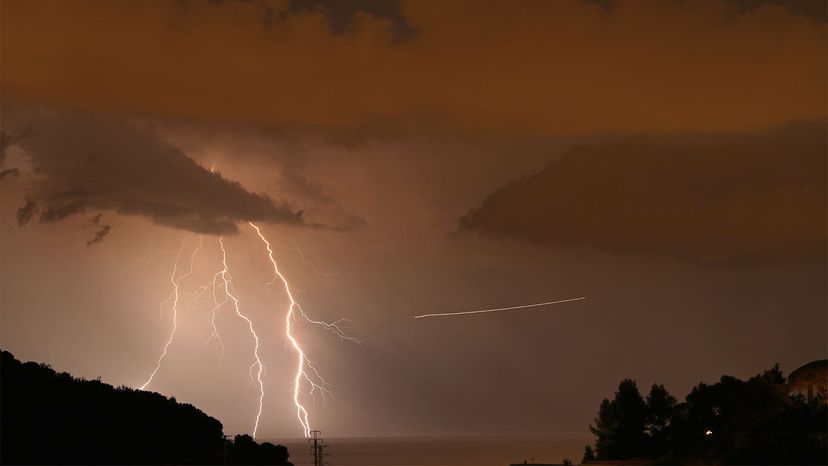Multiple Strikes

You are sitting in your car and you see a flash from a lightning strike. The first thing you notice is that there were many other branches that flashed at the same time as the main strike. Next you notice that the main strike flickers or dims a few more times. The branches that you saw were actually the stepped leaders that were connected to the leader that made it to its target.
When the first strike occurs, current flows in an attempt to neutralize the charge separation. This requires that the current associated with the energy in the other stepped leaders also flows to the ground. The electrons in the other stepped leaders, being free to move, flow through the leader to the strike path. So when the strike occurs, the other stepped leaders are providing current and exhibiting the same heat flash characteristics of the actual strike path. After the original strike occurs, it is usually followed by a series of secondary strikes. These strikes follow only the path of the main strike; the other stepped leaders do not participate in this discharge.
Advertisement
In nature, what we see is often not what we get, and this is definitely the case with the secondary strikes. Depending on the time delay between the strikes, we may see what looks like one long-duration main strike, or a main strike followed by other flashes along the path of the main strike. These conditions are easy to understand if we realize that the secondary strike can occur while the flash from the main stroke is still visible. Obviously, this would cause a viewer to think that the main-stroke flash lasted longer than it actually did. By the same token, the secondary strikes may occur after the flash from the main strike ends, making it appear that the main strike is flickering.